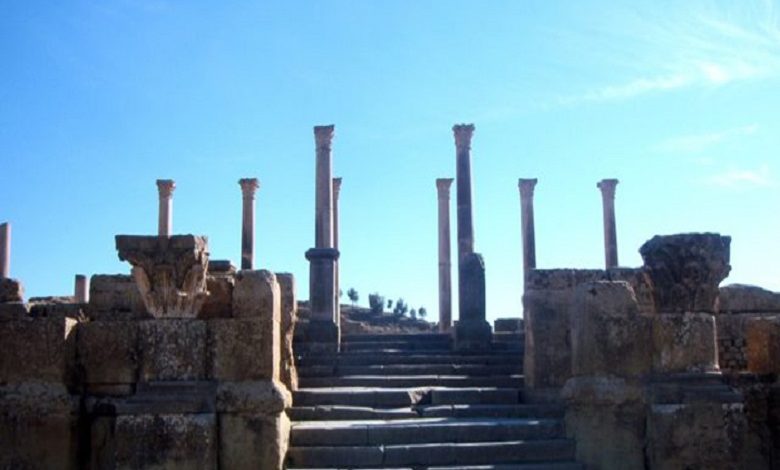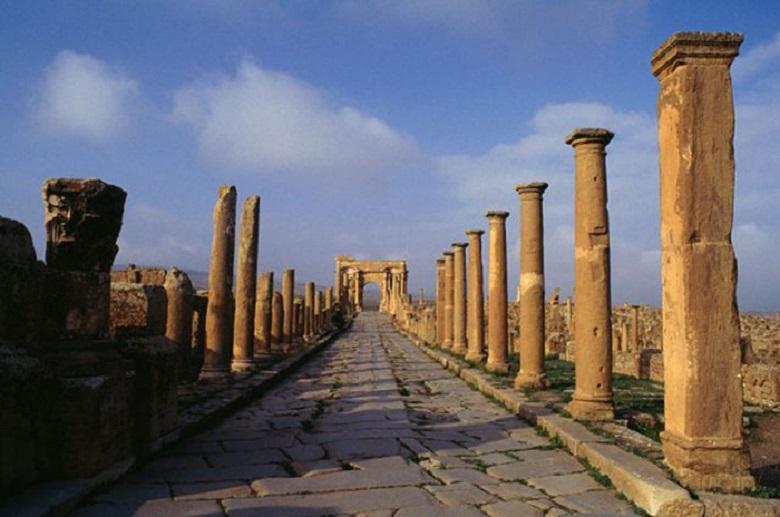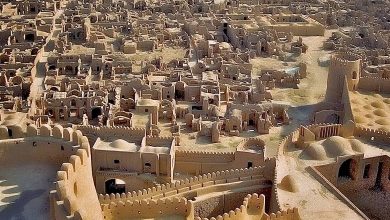Ancient Roman ghost town of Timgad, buried in the sands of Africa for over 1,000 years

On the edge of the famous Sahara Desert, there is a lost city that the sands have hidden for more than a thousand years. The first person who stumbled upon this ghost town was a Scottish explorer back in the 18th century. No one believed him when he told about it. Timgad was fully excavated in the 1950s. What did archaeologists discover about the most impressive city of the remains of the great Roman Empire?
Around AD 100, Emperor Mark Trajan decided to found a city for those soldiers who fought on the side of the 3rd August Legion. These warriors were ready to retire and lead a quieter life than constant military campaigns and battles. Over the course of several decades, this outpost has expanded greatly. More than ten thousand people of both Roman and African, Berber origin, began to live there. Most of them have never even seen Rome.
The city is just beautiful! If you look at his aerial photographs, we will be amazed by this very modern-looking street layout system. Timgad was designed with an orthogonal grid flanked by a magnificent, partially restored Corinthian colonnade. Huge funds were invested in the city. Even though it was located thousands of kilometers from the capital of the Empire, Roman culture and identity were evident in every stone.

The Roman Empire was well aware that the spread of Roman citizenship for non-Romans works for the good of the state is much more effective than violence. This was the Empire’s carefully planned strategy. Local elites received their share in return for loyalty to the Roman authorities.
In addition, people enjoyed all the benefits of civilization – along with the power of Rome, they received such amenities as Roman baths, theaters, libraries. Timgad is an extremely rare example of a well-preserved public library. It contained manuscripts about religion, military history, and government. The surviving shelves of this institution can be observed among the ruins of the city today.

Remains of fourteen baths have been preserved in Timgad. At the entrance to one of them, a mosaic was found dating from the 1st or 2nd century, the inscription on which reads “BENE LAVA”, which translates as “wash well”. Other surviving attractions include a triumphal arch made of sandstone as high as twelve meters, a theater with more than three thousand seats, a basilica with a baptismal font, also richly decorated with mosaics.

Historians say that Mark Trajan, himself a soldier, helped to ensure that Timgad was a successful and prosperous city. The Emperor was very concerned about the well-being of his citizens. To the greatest regret, the wealth of Timgad made him a desirable target for marauders and robbers. Over the centuries, the city has been subjected to many attacks. In the end, it was finally ruined, destroyed, and plundered by the barbarians in 430. Many were killed, the city lost its beauty and success. It was finally abandoned around 700 AD.
The most devastating blow to the wounded city came from a sandstorm in the Sahara. It was she who wiped it off the face of the earth, completely covering the buildings. The city has completely disappeared. Timgad remained buried for approximately 1000 years until an enterprising Scottish explorer named James Bruce stumbled upon it in 1765. He and his team worked tirelessly to excavate Timgad, but then they had no way of collecting evidence of the city’s existence.

Officials in England were very skeptical about Bruce’s statements, and no one was interested in Timgad for another hundred years. Only in 1881, when French colonists inhabited the area, the city was finally completely excavated. Today it is a splendid example of Roman architecture. Many of his buildings, such as the Roman baths, are practically intact.
The city’s ruins are now a UNESCO World Heritage Site. We can observe mute evidence of how civilized the citizens of this Roman community were. Their socially-oriented approach to everything from entertainment to education can be an example for modern society.
Historians, archaeologists, and other experts say this city is a very intriguing place for any student of the history of Roman times. Timgad offers exciting discoveries about those ancient times, the culture of the Roman Empire, and many examples of their achievements. The city is one of those places that must be seen to fully appreciate all the former greatness of Rome.




